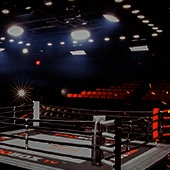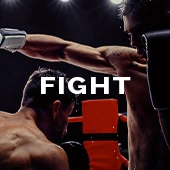by Cliff Rold
Two weeks from now, it arrives.
The best boxing weekend of 2014…and Showtime. From Friday, September 5, through Saturday, September 6, there will be top-tier fights in four countries, across several weight divisions.
The least significant card of that weekend, on paper, will be on Showtime in the US.
Of the top matches, the bout likely to combine the most tickets sold with the highest number of global television viewers has yet to land anywhere on the US television dial. Recent history suggests it will. Whether it’s an ESPN affiliate (even online) or another cable outlet in the eleventh hour, one would assume there would be somewhere to see a battle for the World Heavyweight Championship.
This isn’t kingpin Wladimir Klitschko (62-3, 52 KO, holder of every Heavyweight honor but the WBC’s) fighting someone like Alex Leapai, a long faded Jean Marc Mormeck, Mariusz Wach, or Francisco Pianeta.
No, this is a real defense against a real challenger.
It might be, in the moment, the best of Klitschko’s challengers. Bulgarian Kubrat Pulev (20-0, 11 KO) earned his shot in 2013, becoming the first man not named Wladimir Klitschko to defeat longtime fixture Tony Thompson since the year 2000. A 2005 World Amateur Bronze Medalist and 2008 Super Heavyweight Olympian, Pulev at nearly 6’5 and weighing around 250 lbs. is one of the few challengers in the division who can match Klitschko’s size.
A fight between arguably the two best Heavyweights in the world (and there is no argument about Klitschko’s place in the discussion) shouldn’t be a guessing game for US viewers two weeks out.
It is.
If one could make the argument that US fight fans simply don’t watch Klitschko at all, so be it. The numbers don’t bear that out. He’s not the biggest television attraction in the US, but his numbers have been far from the worst. His bout with Leapai, a woeful challenger that no one took serious, bombed on ESPN with less that 500,000 live viewers.
Bouts with Pianeta, Mormeck, and Wach all aired on Epix, a premium channel in fewer homes.
However, when matched with a serious contender, Klitschko’s numbers have been better. His split numbers (live day and evening replay) for his defense against then-leading contender Alexander Povetkin totaled approximately 1.2 million. The numbers were roughly the same for his defense against David Haye in 2011.
A millions viewers isn’t a ‘good’ number, but for boxing it’s what passes for good in the US these days. Great is when the sport can get closer to 2 million for a live show. The numbers suggest fans are more likely to tune in to see Klitschko if they believe he is facing a legitimate opponent.
So what’s the lag here? It may be a reflection of the belief that, despite his credentials, Pulev isn’t seen as a strong threat to wrest the crown.
Maybe.
It could also be a reflection of what 1.2 million combined day and evening viewers were subjected to in Klitschko-Povetkin, easily one of the least watchable Heavyweight title non-fights on HBO since Mike Tyson-Bonecrusher Smith.
Might be.
Or, perhaps easiest to explain of all, it might be that while hardcore fans see Pulev’s credentials, almost no one in the US outside their ranks has seen him at all. Klitschko-Pulev will draw a house at the O2 Arena and millions of viewers in Germany because that audience knows both men so well.
Since his unification win over Sultan Ibragimov in 2008, Klitschko has not fought again in the US, with ten of his next twelve title defenses coming in Germany. Pulev has fought seventeen of his bouts in Germany.
Heavyweight boxing in the Klitschko era is big business overseas.
In the US, Heavyweight boxing might have become what soccer used to be: a foreign oddity with a curious domestic base of US interest and scoffs from the rest of the general sports fans. The growth of soccer viewership in the US, and the excellent recent World Cup numbers, indicate there is always room for change.
Does Heavyweight need a change to change its trend?
This isn’t another whiny lament about how boxing in the US needs an American Heavyweight savior. It would be great if one emerged and tickled the fancy of US viewers. There are still many casual viewers who could be lured back to the sport if one emerged. A decade of results, both amateur and professional, indicates that’s a long shot. 2008 Olympic Bronze Medalist Deontay Wilder is best positioned to be that guy, but questions about his readiness and whiskers abound.
Among boxing’s many US problems, the decline of interest in Heavyweight boxing has correlated with a loss of viewers overall for the sport in the 21st century. And it wasn’t just about American fighters.
There have been, as there were in the 1980s, lower weight fighters to sustain the sport in the absence of big men. They aren’t delivering viewers the way the tail end of the last great big man era did.
It wasn’t that long ago that an event like Lennox Lewis-Vitali Klitschko in 2003, neither an American, could take over Sports Center for a week and deliver the sort of live number boxing in the US hasn’t sniffed in ages at some 7 million viewers. Klitschko’s fight the following year against Corrie Sanders did over 2 million homes, and 3 million viewers.
If either premium network popped 3 million viewers for a live fight in 2014, they might throw themselves a ticker tape parade.
The pay-per-view buyrates for the two top draws of this era (Floyd Mayweather and Manny Pacquiao) have hit some rare air and the eyeballs they’ve drawn on their biggest nights, when factoring in club and bars viewings, and household parties, are probably on par with the Heavyweight fights of those years. The rest of the time, boxing is struggling to find anyone who can get within shooting range of the Klitscko-Sanders number.
Serious boxing fans will watch Wladimir Klitschko. There is no indication casual sports fans who might be drawn to Heavyweight boxing have keen interest in the current champion. It’s not that he’s completely anonymous. His name is known. He’s enviably engaged to an attractive American television star.
None of that is what matters. Wladimir Klitschko just doesn’t excite enough US interest. His brother did, though injuries stopped that train before it had a chance to grow. Even with injuries, Vitali’s 2009 fight against Chris Arreola did over 2 million US viewers on HBO. The now-retired Vitali was was the more exciting of the two and there is a strong argument that perceived excitement at the top of the Heavyweight division still brings more eyes.
The younger Klitschko fails the perception test.
In that light, would a Pulev win, no matter where it’s seen in the US, be the best thing that could happen to the division in the US? The shockwave it would send through the division, the shaking up of the status quo, would be felt even if not widely seen. It would instantly make a rematch of interest everywhere.
That would be a start.
There is a sense of redundancy in the division. If Povetkin was the end of the last wave that also featured Haye and Eddie Chambers, Pulev can be seen as the first of a new wave of threats along with Wilder, Bermane Stiverne, and Tyson Fury. New threats equal new challenges and possibilities.
As Hasim Rahman, a much bigger underdog versus Lewis many years ago than Pulev is now, showed, it only takes the right shot. Pulev isn’t a huge puncher but he’s a big man and the shots he lands hardly look friendly. He’s not going to be someone Klitschko can just lay on like he did a Povetkin. Pulev can push back.
It wouldn’t surprise if the latest clash of Heavyweight’s best flops, or if it manages intrigue with Klitschko still dominating.
But if there were a surprise, the subsequent buzz would be nothing but a positive.
On September 6th, there is a man across from Klitschko with a decent chance to win. They’re fighting for what remains boxing’s most storied title.
Those two factors make this a fitting piece of the weekend of the year. Now it just needs airtime.
Cliff’s Notes…
With the boxing calendar sparse, the weekend of the year takes center stage for the next few weeks…Next week, a look at Jr. Featherweight and the meaning of the big September 6th clash between Kiko Martinez and Carl Frampton…The following week, it’s all about most exciting piece of this puzzle: FlyWars.
Cliff Rold is the Managing Editor of BoxingScene, a founding member of the Transnational Boxing Rankings Board, and a member of the Boxing Writers Association of America. He can be reached at roldboxing@hotmail.com


